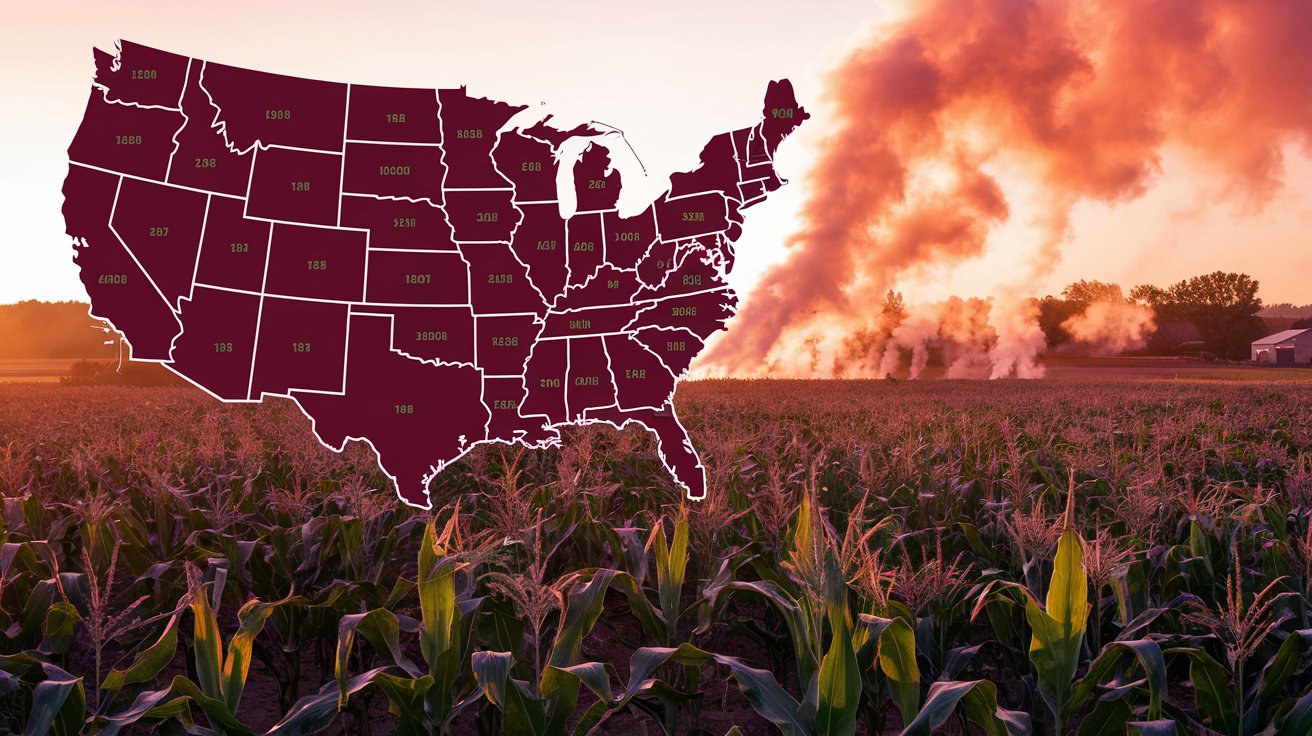Corn Sweat: The Surprising Driver of Midwest Heat Waves in the United States
When people think of heat waves, they often consider global warming, rising emissions, or dry weather patterns. However, in the heart of the U.S. Midwest, there's a surprisingly natural and often overlooked contributor — corn sweat. Yes, it might sound odd at first, but cornfields have a powerful influence on the region's summer climate through a natural process that scientists call transpiration.
🌽 What Exactly Is Corn Sweat?
Just like humans sweat to cool off, plants release water through tiny pores in their leaves. This process is known as transpiration. Corn plants, which are widely grown throughout the Midwest, are particularly efficient at this. A single acre of corn can release between 3,000 to 4,000 gallons of water into the atmosphere per day during peak summer growth.
This release of moisture contributes significantly to the overall humidity in the air, especially when temperatures soar. The combination of heat and humidity makes the atmosphere feel much hotter than the actual temperature — a factor known as the heat index.
🔥 How Cornfields Intensify Summer Heat
The added water vapor from corn plants thickens the air and increases the heat index. For instance, if the air temperature is 90°F, the high humidity from corn transpiration can make it feel like it’s 105°F or higher. This phenomenon doesn’t just affect farmers in the fields — it impacts millions across cities and towns in the Midwest.
This process becomes particularly important during high-pressure weather systems, where hot air stagnates over a region. The moisture released by corn plants adds to the discomfort, leading to extreme mugginess and intense heat waves.
📍 Where Is Corn Sweat Most Common?
Corn sweat is most prominent in areas with dense corn production. These include:
- Iowa – Often the leading corn-producing state
- Illinois – Vast fields and high summer humidity
- Nebraska – Large-scale corn farming contributes to heat buildup
- Indiana – Known for both agriculture and humid summers
These states, collectively known as the Corn Belt, experience the strongest corn sweat effect, especially in July and August when corn reaches full height and rapid growth.
🌎 Agriculture’s Role in Weather Patterns
It’s easy to overlook how agriculture impacts local climate, but corn sweat is a perfect example. The crops not only feed the nation but also affect the weather. In the Midwest, the sheer scale of cornfields means that the transpiration effect can influence regional forecasts.
Farmers depend on weather for their livelihoods, but at the same time, their crops influence the weather in return — a fascinating cycle of cause and effect.
🧠 Why Should We Care About Corn Sweat?
Understanding corn sweat isn't just a curiosity — it’s a valuable insight for:
- Meteorologists – To better forecast heat waves and humidity spikes
- Public health officials – To prepare communities for dangerous heat conditions
- Urban planners – To develop heat-resistant cities and infrastructure
- Climate scientists – To explore how agriculture contributes to climate feedback loops
With more frequent and severe heat waves due to climate change, local humidity levels can be the difference between a warm summer day and a dangerous heat alert. Corn sweat adds to this equation in a significant way.
✅ Final Thoughts
Though it sounds quirky, corn sweat is a serious environmental factor. It shows how interconnected nature, farming, and human comfort really are. While corn supports the economy and food systems of the Midwest, it also helps create some of the most uncomfortable summer conditions in the region.
So next time you're sweating through a hot, humid day in Iowa or Illinois, just remember — it might not just be the sun. It could be the corn sweating with you.
Stay informed, stay cool, and don’t underestimate the power of plants!

